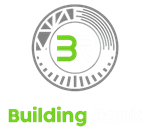Damascus - Al Mazraa - Opposite the back door of the Ministry of Education
Wars - Top 10 Steps to Inspect Buildings After Wars
Wars cause massive destruction to stone and people, and buildings can be exposed to visible and hidden damage, so they must be examined from all sides and the visible and hidden damages evaluated.
.webp)
Top 10 Steps to Inspect Buildings After Wars
Examining buildings after wars is an absolute necessity, in order to assess the damage and determine their suitability for future use. Examining buildings after conflicts requires technical expertise and specialized knowledge to identify structural damage and other problems that may affect the safety of the building.
Article Content:
- The 10 most important steps for examining buildings after wars.
- How to examine buildings after wars.
- What are the non-destructive examination methods that are used.
First: The 10 most important steps for examining buildings after war:
After the cannons fall silent, the sounds of pickaxes rise in full swing to rebuild what the wars left behind. Here, it is necessary to take serious and correct steps to examine the buildings and assess the damage to begin restoration, the most important of which are:
1- Assessing visible damage:
Buildings are examined from the outside and inside and the condition of the walls and columns is assessed to determine visible damage such as cracks, partial collapses, and structural damage.
The extent of the impact on the foundations and internal and external structures must be determined.
2- Assessing hidden damage:
There may be hidden structural damage that can affect the stability of the building. In case of doubt, it is preferable to seek the help of a specialized engineer to assess the structural damage and provide recommendations.
Buildings are examined by conducting a specialized examination using techniques such as X-rays, infrared imaging, thermal cameras, and magnetic resonance imaging devices to identify hidden damage, such as internal cracks and invisible structural damage.
This examination requires calling a team of engineers and technicians to accurately assess structural damage.
3- Analysis of the load-bearing capacity of buildings:
The load-bearing capacity of buildings damaged by wars is analyzed to determine whether they are able to bear future loads or need structural repairs.
This requires the use of specialized computer programs to analyze structures and evaluate the load-bearing capacity.
4- Documenting damage:
The discovered damages must be documented with documents and records and photographed if possible. These records can be used to assist in the evaluation process and subsequent reconstruction.
The existing damages in the building must be documented through photography and detailed notes.
This helps in estimating the cost of future repairs and directing reconstruction efforts effectively.
5- Consulting specialists:
It is necessary to consult engineers specialized in building and structural engineering to assess the damage and determine the necessary procedures for rehabilitating the building.
Specialized engineers can provide recommendations on structural repairs and preventive measures to ensure safety. It becomes necessary to inspect buildings to assess the damage and determine their suitability for use.
6- Foundation assessment:
The condition of the foundations and supporting columns of buildings damaged by wars must be assessed to ensure their stability and the absence of cracks or damage.
7- Electrical and sanitary systems assessment:
The condition of the electrical and gas systems in the building must be checked. There may be damage that threatens your safety, so it is preferable to work with qualified technicians to verify that the systems are safe before using them.
The condition of the electrical and sanitary systems must be assessed to ensure their safety and the absence of damage or danger to residents.
8- Inspection of the ceiling and floor:
It is necessary to check the condition of the ceiling and floor, and to check for holes or leaks in the ceiling that may lead to water leakage on the floor. It is also necessary to check for damage from collapses and cracks in the floor.
9- Assessing the situation with regard to public safety:
You must ensure that the places you wish to inspect are safe and do not pose a risk to your personal safety. You must also check for the possible presence of mines or unexploded bombs before arriving at the site.
The general condition of the buildings must be assessed and whether they are fit for use or need repairs and reinforcement.
To inspect buildings after wars, you must seek the help of engineers specialized in civil engineering and structural engineering, to evaluate the buildings and provide the necessary guidance.
10- Communicate with the relevant authorities:
You may need to contact local authorities or non-governmental organizations concerned with reconstruction to obtain assistance and support in repairing and rebuilding damaged buildings
Second: Method of inspecting buildings after wars:
Inspecting buildings after war is necessary to know the condition of partial structural elements without their further disruption or damage. These methods can provide accurate information about the condition of the structural elements in question and help in an accurate assessment of buildings.
A plan must also be developed for the necessary repairs. This is done using non-destructive methods, and must be carried out by skilled and qualified individuals in these fields.
Third: What are the non-destructive inspection methods that are used:
The following are some examples of non-destructive methods that can be used in inspecting buildings:
- Ground radar: This method can be used to check the condition of internal structural elements without the need for breaking or tapping.
- Mobile board inspection: This method can be used to check the condition of concrete surfaces and walls using a mobile board that enables us to detect any problems in the surface or interior.
- Sound inspection: This method can be used to check the condition of internal structural elements using sound devices, which enables us to detect any weakness in structural elements.
- X-ray inspection: This method can be used to check the condition of cement, steel and concrete to detect any internal problems that cannot be seen with the naked eye.
There are several other types of non-destructive methods that can be used in inspecting buildings, and engineers and specialists must choose the appropriate method for the building, location, surrounding conditions and expected risks.
Conclusion:
After wars, it is necessary to inspect buildings to assess damage and determine their suitability for future use. Inspecting buildings after conflicts requires technical expertise and specialized knowledge to identify structural damage and other problems that may affect the safety of the building.
We, BUILDING RANK, provide a property inspection service of any type, from all aspects (structural and architectural - electrical - mechanical - surrounding environment), and we provide you with a comprehensive report of all problems and offer suggestions to solve them, and in this way you protect your investment and money.
Do not hesitate to contact us

 العربية
العربية English
English 




Related Information:
Best Types of Real Estate Investment
Many people are looking for many ways to invest their money, and Investing in real estate is considered a good investment and one of the best ways to preserve the value of your money, but it is not without some risk, if the market, the location of the property and the availability of services are not studied, and prices can also rise or fall.
قراءة المزيدWater leaks and Humidity in the Property - Inspection Points and Treatment
Learn with us about the most important points that the company examines, how to determine the causes of humidity without breaking the tiles and using the latest devices available at Building Rank Company, and how to prepare the report by the company’s engineers
Read More